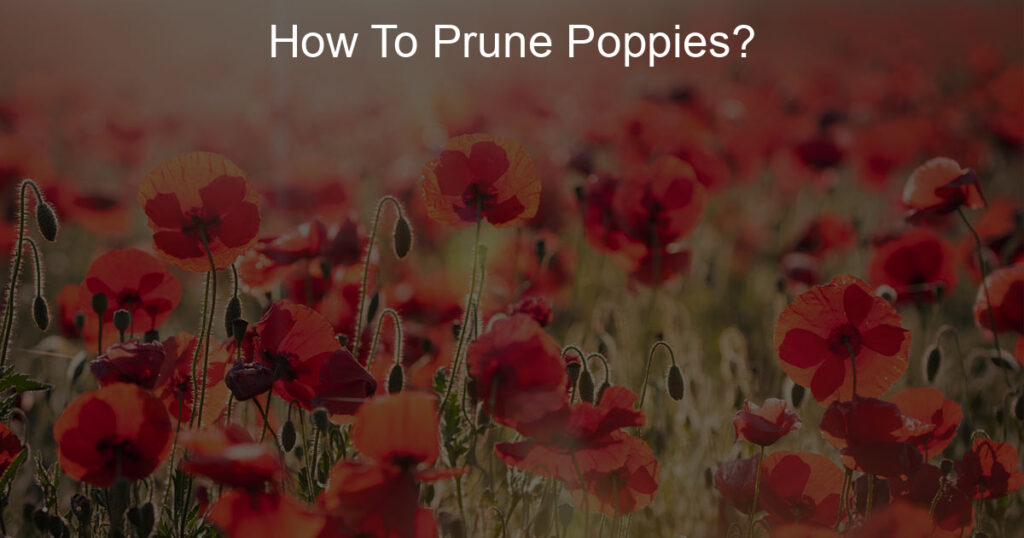Poppies are among the most beautiful and popular garden flowers. They thrive in almost all types of soils and can be grown in almost every part of the world. These plants also attract a lot of insects making them an ideal choice for a garden with lots of pollinators.
Poppies tend to grow slowly, so pruning them is not too much of a task. They are also fairly low maintenance once they are planted, with only occasional deadheading required to keep them looking tidy. To keep these lovely plants in shape, itג€™s important to know how to prune poppies at least once per year so that they donג€™t get out of hand and start to grow into unsightly tangles or woody shrubs.
In this article we will explore some common reasons for poppies needing pruning and how you can do it safely.
Where Do You Trim Poppies?
Poppies produce a lot of new growth, so it is important to give them a good amount of space. Sometimes too much of a good thing can be harmful, and this is the case with poppies. Because their root systems are so extensive, they will not always thrive in confined spaces. If you have a large garden, consider planting them away from other plants so that they donג€™t take up all the room.
When trimming your poppies you should avoid pruning them back near their flowers as this will lead to reduced flowering and overall poor performance. Instead, you should leave at least two buds on each stem when cutting back the plant. When pruning these stems, make sure that there is no sign of disease or fungal infections along these stems before making the cut.
Should I Cut My Poppies After Flowering?
Poppies are not the type of plant that flower all at once and most growers allow the plants to bloom for a few weeks before they cut their blooms back. However, some people will wait until after flowering season to prune their poppies. If you do this, then it is important to trim your plants back by only 1/3 of the stem diameter or less and make sure that you leave at least one node on each stem and one leaf in order to support the new growth. This will help maintain a healthy and attractive shape throughout the summer months.
If you decide to cut your poppies after flowering, then it is important to keep them trimmed back so that they donג€™t get too leggy. After about four weeks, trim your plants down again by 1/3 or less of the stem diameter and make sure there are still leaves on each stem. You should also be careful not to trim too much as this can cause damaged stems as well as injury or death of buds.
Do You Cut Back Poppies for Winter?
Poppies require pruning to stay alive. Itג€™s important to cut back your plants before winter, when there is less sunlight and the plants need to conserve energy.
Itג€™s a good idea to do this as soon as they start showing signs of stress, such as yellowing leaves or wilting flowers. There is no need to cut them down completely, but itג€™s always wise to carefully clip off their dead parts in order to keep the plant from dying prematurely. This includes cutting out any dead or diseased parts of the stem and removing any flowers that arenג€™t open so that the plant can put all of its energy into remaining green and healthy for the winter months.
Will Poppies Rebloom if Cut Back?
Poppies will rebloom if you cut them back to just above the fourth or fifth leaflet. They need to be pruned in fall when they are dormant, so that they have time to grow new leaves before spring. If you wait until after they bloom, they will not rebloom.
The easiest way to know when it is time to cut back your poppies is by planting a few garden markers at different heights around the plant and checking regularly as the seasons change. When the markers are covered with flowers, it means itג€™s time to cut back the poppies.














